Best Flea Treatment for Cats: Top UK Solutions for a Healthy Feline.
Dealing with fleas is a common concern for cat owners, especially in the UK where these pesky parasites can thrive. Ensuring your feline friend stays flea free is crucial for their health and comfort. In this comprehensive guide, we explore the best flea treatment for cats available in the UK, providing you with expert insights and recommendations. From spot on treatments and oral medications to natural remedies, we cover all the options to help you choose the most effective solution for your cat. Keep reading to learn how to identify, treat, and prevent flea infestations, ensuring your cat remains happy and healthy year round.
Table of content
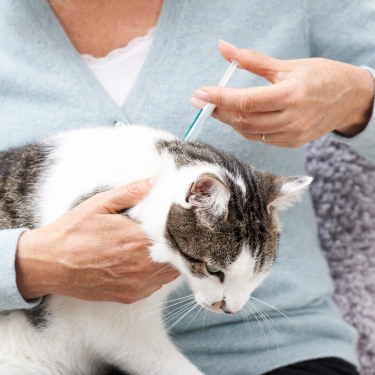
What are cat fleas?
Fleas are tiny, wingless insects that live as parasites on the bodies of animals, such as cats and dogs, feeding on their blood. Numerous species of fleas exist, including cat fleas, dog fleas, and human fleas, with some species capable of infesting multiple types of hosts.
Certain stages of the flea life cycle, such as flea eggs and larvae, can survive in the environment for months without a host. They thrive in warm, humid weather, making them more common outdoors in spring and summer. However, due to central heating, fleas, including cat fleas and flea ticks, can also persist in our homes year round. This means they can produce on cats and dogs long lasting infestations.
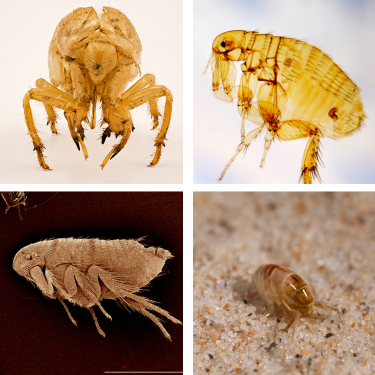
To effectively combat these pests, it's important to use cat-specific flea treatments and maintain a home flea prevention routine. By understanding the flea life cycle and using the right products, you can keep your pets and home free from these parasites.
How can my cat get fleas?
Adult fleas, including cat fleas, live, feed, and mate on our pets. The female flea lays flea eggs that fall off into the environment, where they hatch into egg larvae. These larvae consume organic debris until they mature into pupae. Pupae can remain dormant for weeks to months, waiting for optimal conditions before emerging as adults. Newly hatched adult fleas then jump onto a host animal, such as a cat or dog, to complete their life cycle.
Two days after consuming a blood meal from the host, the female flea starts laying eggs. Under ideal conditions, the flea can complete its entire life cycle in as little as two weeks; in less favorable conditions, the cycle can extend up to a year.
The primary source of cat fleas is newly emerged adult fleas from pupae in your house or yard. Homes with carpets, soft furnishings, and central heating offer perfect conditions for the year round development of fleas. The highest concentrations of flea eggs, larvae, and pupae are typically found in areas where pets spend the most time, such as their beds and furniture. To produce a cat and dog friendly environment free of fleas, it's essential to use cat specific treatments and maintain a home flea prevention routine for long lasting results.
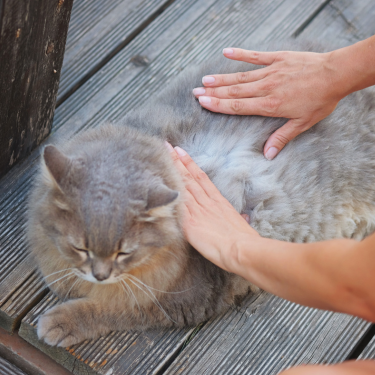
How to tell if your cat has fleas?
Detecting fleas on cats can be challenging, especially because cats are skilled at grooming away pests like cat fleas and flea ticks. To spot an infestation, closely examine your cat and watch for physical symptoms. If you notice unexplained insect bites on family members, it could indicate the presence of fleas. Given that fleas can thrive year round and persist in soft furnishings and throughout the home, using appropriate cat specific treatments is crucial to effectively manage and prevent long lasting infestations.
How do fleas affect my cat?
Many cats coexist with fleas without displaying obvious signs, yet complications can arise. Some cats may develop an allergy to flea bites, particularly after repeated exposure. These flea allergic cats often exhibit excessive grooming or scratching following even a single flea bite, leading to potential skin infections. Lesions commonly appear near the base of the tail. Such intense grooming behavior can sometimes remove all visible evidence of a flea infestation, complicating diagnosis. Consequently, your veterinarian might recommend rigorous flea control measures, even if no fleas are currently detected.
Adult fleas reside on animals, feeding on their blood. A single adult flea consumes a significant amount of blood relative to its size throughout its lifespan. In kittens, or older or debilitated cats with heavy flea burdens, this blood loss can lead to severe anemia.
Additionally, fleas serve as intermediate hosts for certain tapeworm species. This means tapeworms require fleas to complete a segment of their life cycle. Flea larvae become infected by ingesting tapeworm eggs, and if a cat swallows an infected flea during grooming, the tapeworm larva matures into an adult tapeworm inside the cat's intestines. Therefore, any cat harboring fleas is also susceptible to tapeworm infestations (refer to the "Tapeworm Infection in Cats" handout for further details).
What do cat fleas look like?
Fleas on cats are typically small, measuring only 1–2mm in length and dark brown in color. Spotting them can be challenging, especially on darker colored cats, as they may blend into the fur.
You might also notice tiny black specks in your cat’s coat or bedding, which could indicate flea dirt or flea droppings.
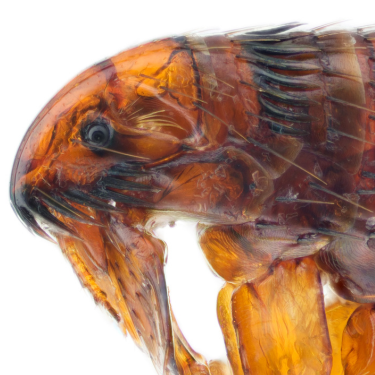
One effective method to check for fleas on cats is by gently grooming them with a comb. After combing, shake the comb over a damp piece of white paper or kitchen towel and inspect for fleas or their droppings. Flea droppings often leave a reddish brown stain on moist white paper, caused by the digested blood they contain.
Signs of fleas on cats
Even if you don’t visually spot any cat fleas, your cat’s behavior and appearance may exhibit telltale signs of an infestation. Look out for symptoms such as:
- Persistent scratching
- Excessive grooming
- Patches of hair loss
- Irritated or sore skin
- Lethargy or pale gums (especially in kittens)
These indicators could suggest various health issues, including those related to flea ticks, flea eggs, and egg larvae. Given that fleas can persist year round and thrive in soft furnishings and throughout the home, it's crucial to employ effective home flea control methods and use appropriate cat specific treatments. If unsure about the cause of these symptoms, always seek veterinary advice promptly.
How to get rid of fleas on cats?
What is the best flea treatment for cats in the UK? Always opt for a veterinarian recommended treatment to address cat fleas, and remember to treat your home environment as well. Prescription only parasiticides are the most effective choice, acting swiftly to eliminate a variety of parasites including flea ticks, flea eggs, and egg larvae. Consult your vet to find a product suitable for your cat.
Common treatments for fleas on cats include:
- Spot-on products: Applied to your cat’s neck with a pipette, these treatments are generally effective for up to a month. Some brands target all stages of the flea life cycle, while others focus solely on adult fleas.
- Tablets: These prevent flea eggs from maturing into adults, disrupting the flea life cycle. However, administering tablets can be challenging if your cat is reluctant.
- Powders: Sprinkled over your cat’s fur, powders kill adult fleas but do not affect flea eggs or larvae. Ensuring full coverage on your cat’s body can be difficult.
- Collars: Infused with chemicals to inhibit flea development, collars may not always be effective. Cats with sensitive skin could experience reactions to flea collars.
- Shampoo: Designed to eliminate adult fleas, flea shampoos do not address eggs or larvae. Bathing cats can be challenging for many owners, making this option less practical.
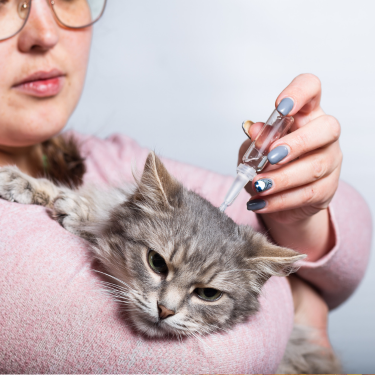
Always confirm that any treatment is vet approved and specifically formulated for cats. Using flea products intended for dogs can be toxic and potentially fatal to cats. In households with multiple pets, every cat, dog, or rabbit should receive treatment to prevent cross infestation.
While natural remedies for fleas on cats exist, their efficacy varies. Some natural treatments, such as those containing essential oils like tea tree or citronella, can be toxic to cats and should be used cautiously or avoided altogether.
How to get rid of cat fleas in the home
Only adult fleas reside on your pet, while as many as 95% of flea eggs and larvae can be found in your home, including bedding, carpets, and soft furnishings. To effectively break the flea life cycle and prevent reinfestation:
- Clean your cat’s bedding regularly and wash or steam clean rugs, sofas, and cushions they frequent. Also, wash your own bedding if your cat sleeps with you.
- Vacuum all carpets and soft furnishings thoroughly, ensuring to dispose of the vacuum bag or empty the canister after each use to prevent flea eggs and larvae from developing.
- Use a household insecticide spray specifically formulated to target fleas. Ensure it is safe for use around cats and keep your cat out of treated rooms until the spray has dried.
Consistent use of flea treatments for your cat will help maintain a flea free environment in your home. If your cat has a flea allergy or experiences skin reactions, consult your veterinarian for advice on the best flea tick treatment. Ensure to choose easy to apply flea products designed for cats, such as flea collars or spot on treatments. For more information, visit our website.
FAQ's
1. My indoor cat has fleas what do i do?
If your indoor cat has fleas, start by using a vet approved flea treatment designed for cats. Choose from spot on treatments, flea collars, oral medications, or flea shampoos. Simultaneously, thoroughly clean your home by washing bedding, vacuuming carpets and furniture, and using safe household insecticide sprays. It's essential to treat both your cat and your home to effectively eliminate fleas and prevent re-infestation.
2. What do cat fleas look like to the human eye?
Cat fleas are tiny, dark brown insects, about 1-2 millimeters in length, often visible scurrying through your cat's fur or bedding.
3. How soon can i give my cat another flea treatment?
The timing for administering another flea treatment to your cat depends on the specific product used. Typically, spot on treatments are applied monthly, while oral medications may have different intervals, such as every 1-3 months. It's important to follow the instructions on the product label or consult your veterinarian for guidance on how often you should flea your cat based on their specific needs and the type of treatment used.
4. How to get rid of cat fleas?
To get rid of cat fleas, use a vet approved flea treatment specifically for cats, such as spot-on treatments, flea collars, oral medications, or flea shampoos. Additionally, thoroughly clean your home by washing bedding, vacuuming carpets and furniture, and using household insecticide sprays safe for cats. Regularly treat all pets in the household and consult your veterinarian for personalized advice.
5. Why does my cat keep getting fleas?
Your cat may continue to get fleas due to various factors. These include exposure to outdoor environments where fleas thrive, incomplete eradication of fleas and their eggs from your cat or home, potential reinfestation from other animals or environments, possible resistance of fleas to certain treatments, and seasonal fluctuations in flea activity. To effectively manage and prevent flea infestations, use vet approved flea treatments regularly, treat your home environment, and consult with your veterinarian to tailor a comprehensive flea control plan for your cat.
6. Why does my cat have scabs but no fleas?
If your cat has scabs but no visible fleas, it could be due to allergies (such as flea allergy dermatitis), other parasites like mites, skin infections, over grooming, or underlying skin conditions. It's best to consult your veterinarian for a proper diagnosis and treatment plan tailored to your cat's specific needs.
7. What if my cat licks off the flea treatment?
Most flea treatments are designed to be waterproof once dry. If your cat ingests some after application, monitor for any adverse reactions and consult your vet if concerned.
8. Can I prevent fleas on my cat naturally?
Natural prevention methods include regular grooming, using flea combs, and applying essential oils like lavender or cedar (consult your vet for safe options).
9. How long does it take for flea treatments to work?
Most flea treatments start killing fleas within a few hours to days. Complete elimination of fleas may take several weeks due to the flea life cycle.
10. When should I start flea prevention for my kitten?
Begin flea prevention as soon as your kitten is old enough to receive treatments, typically around 8 weeks of age. Consult your vet for specific recommendations.
















